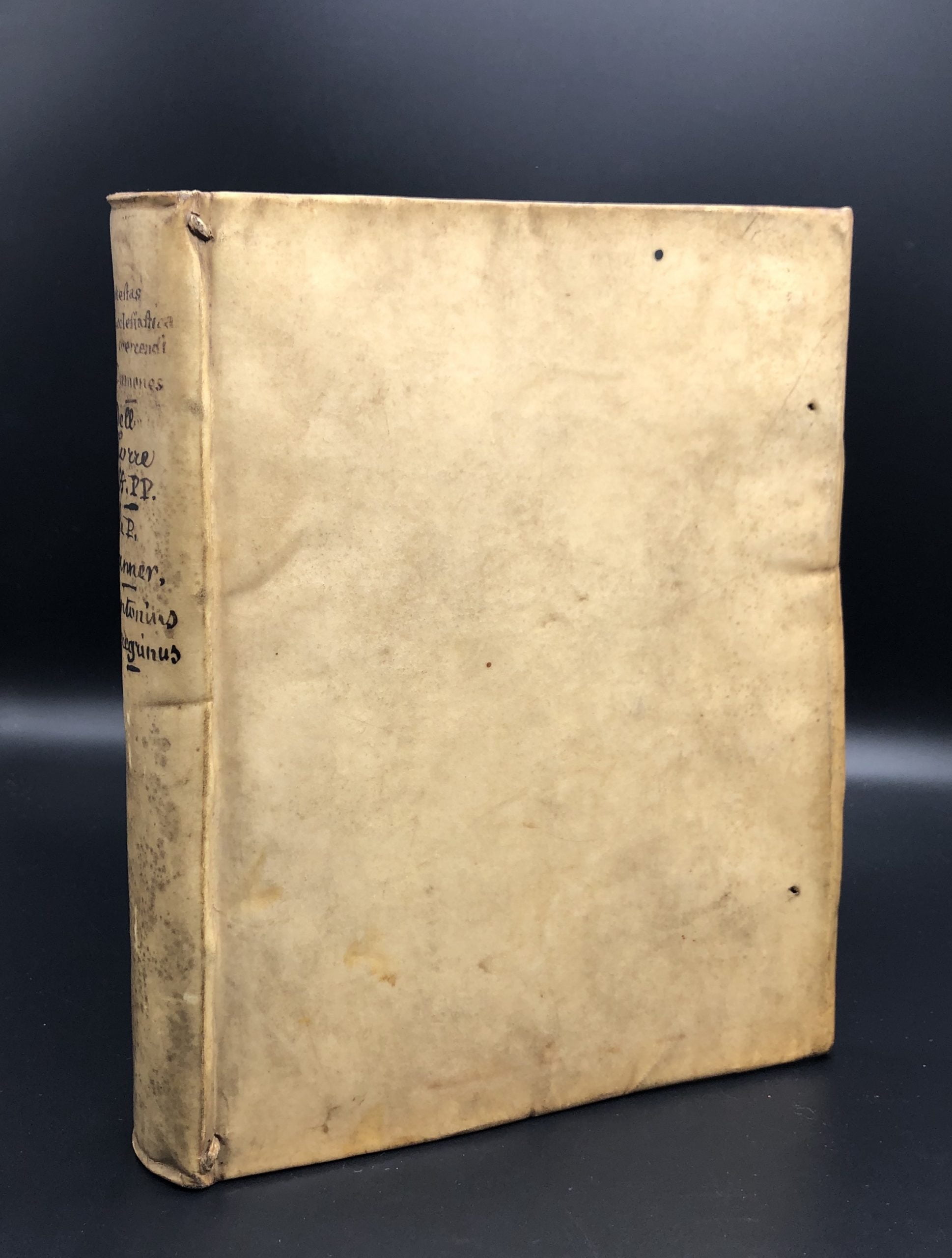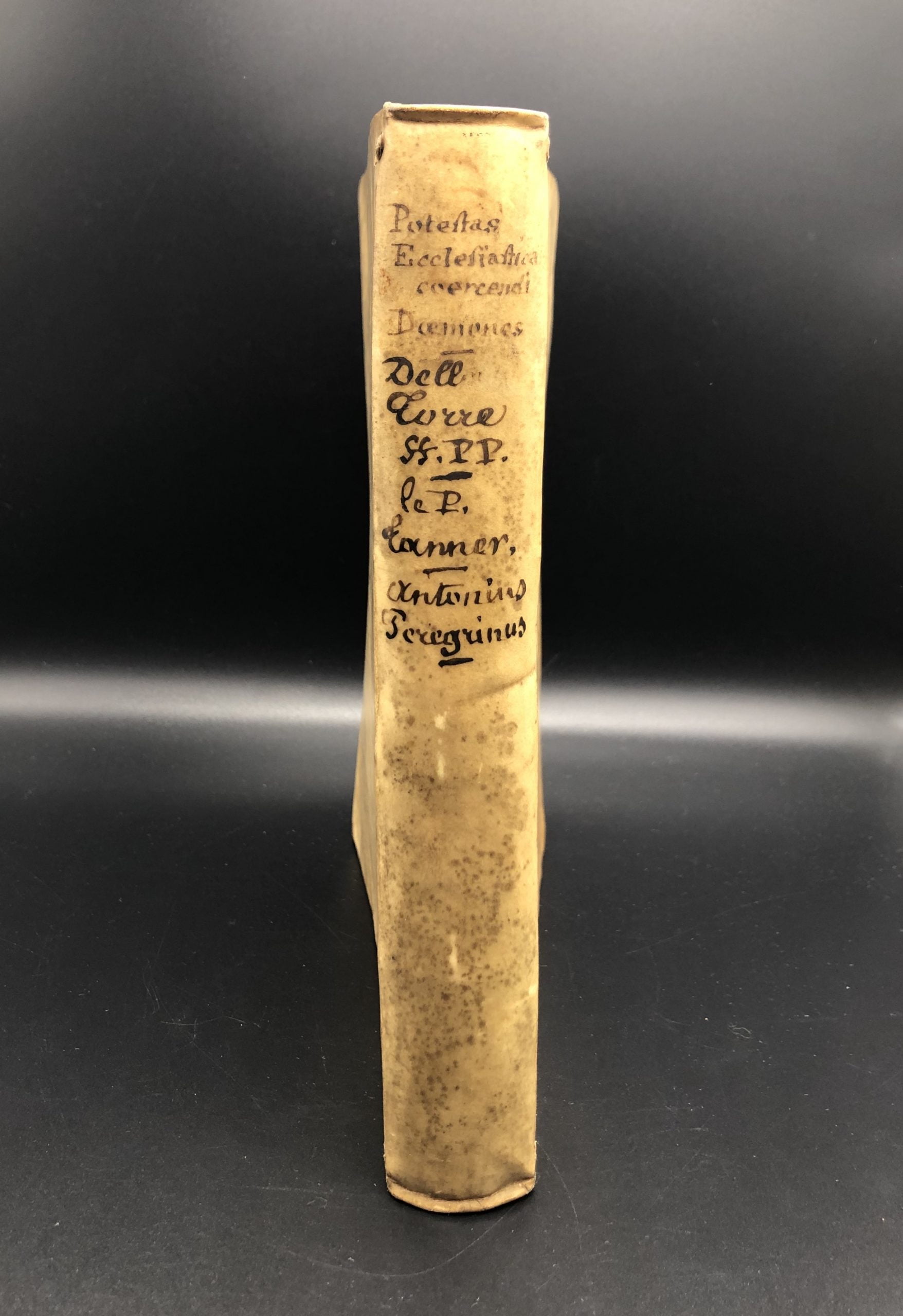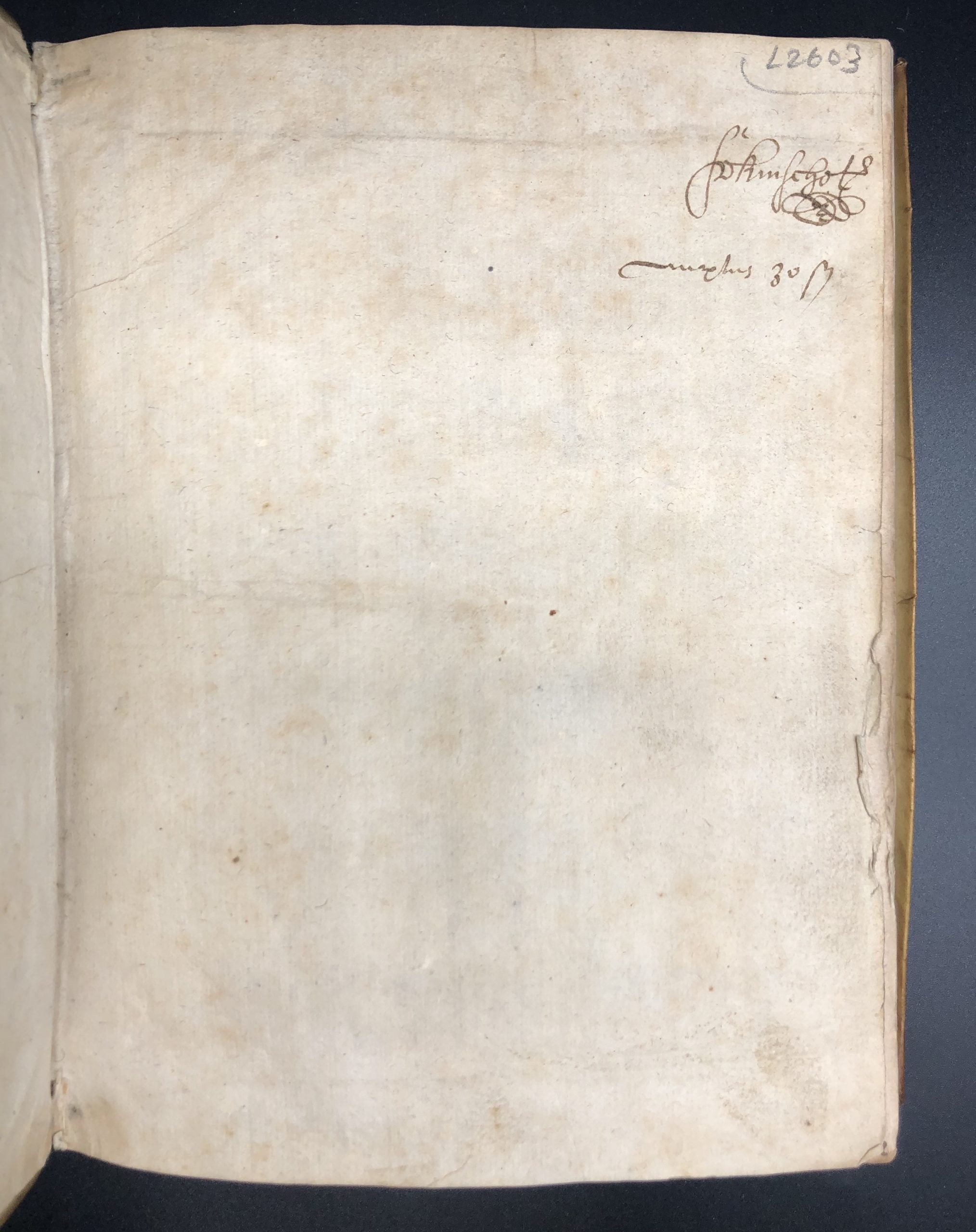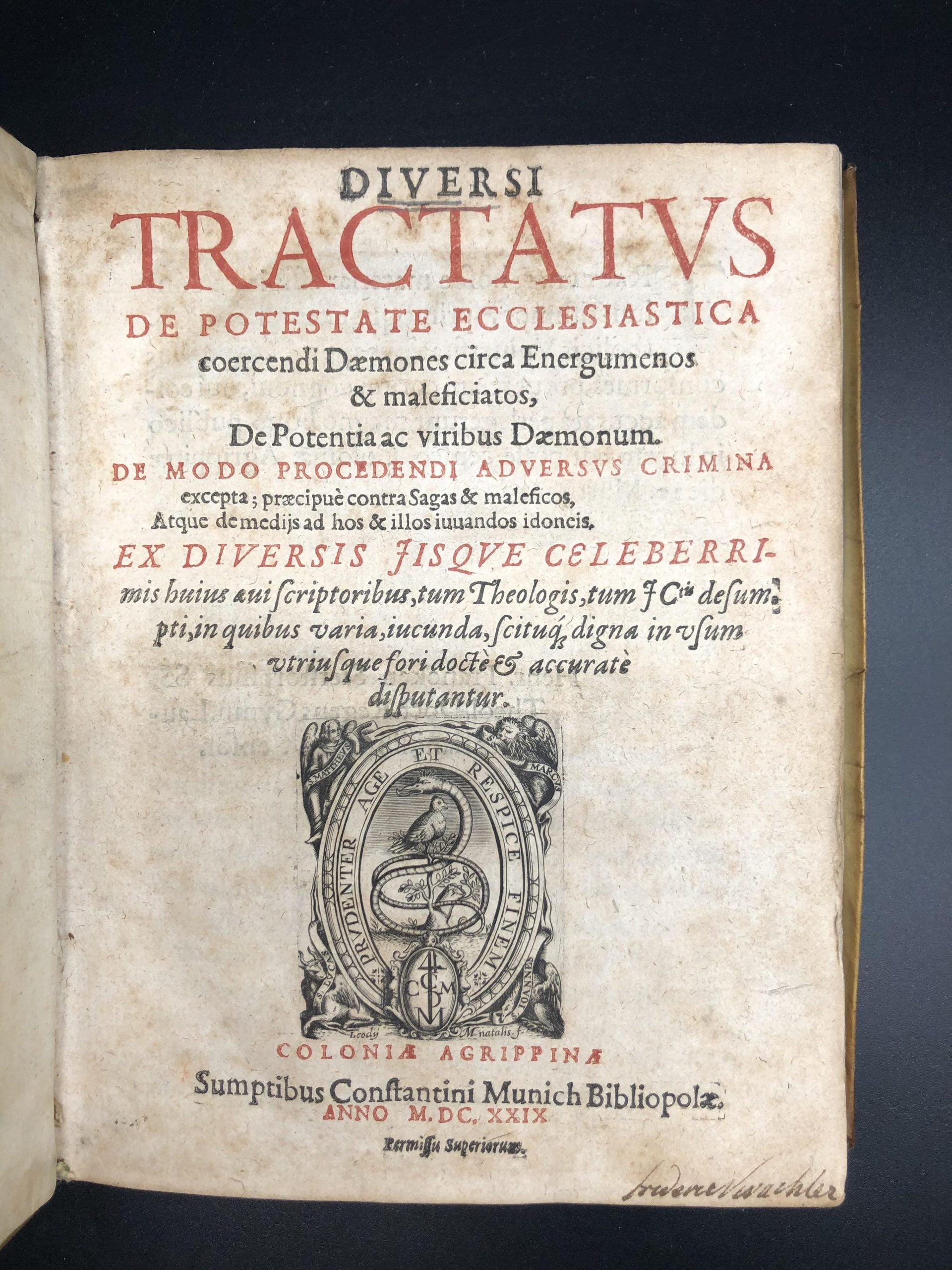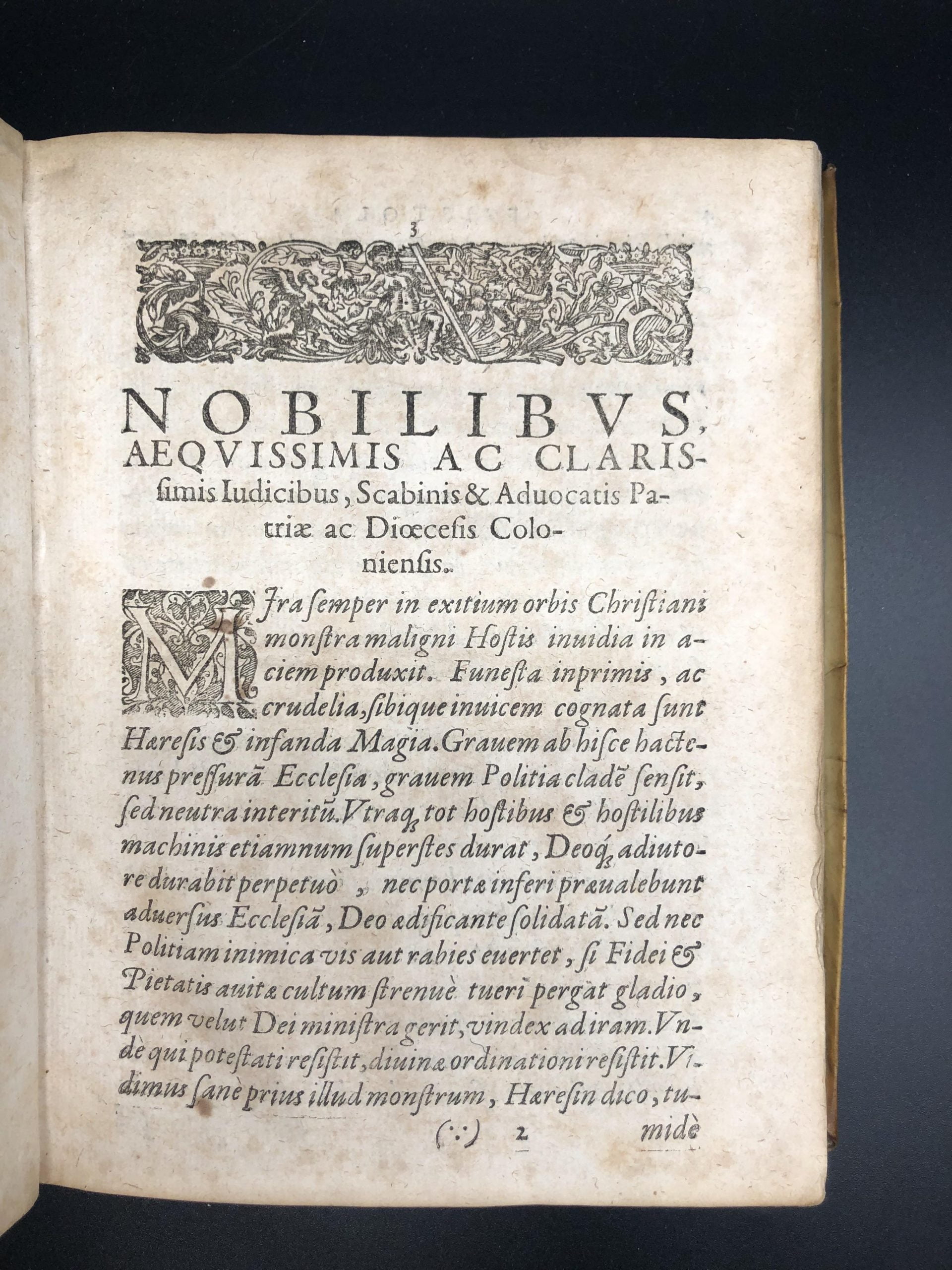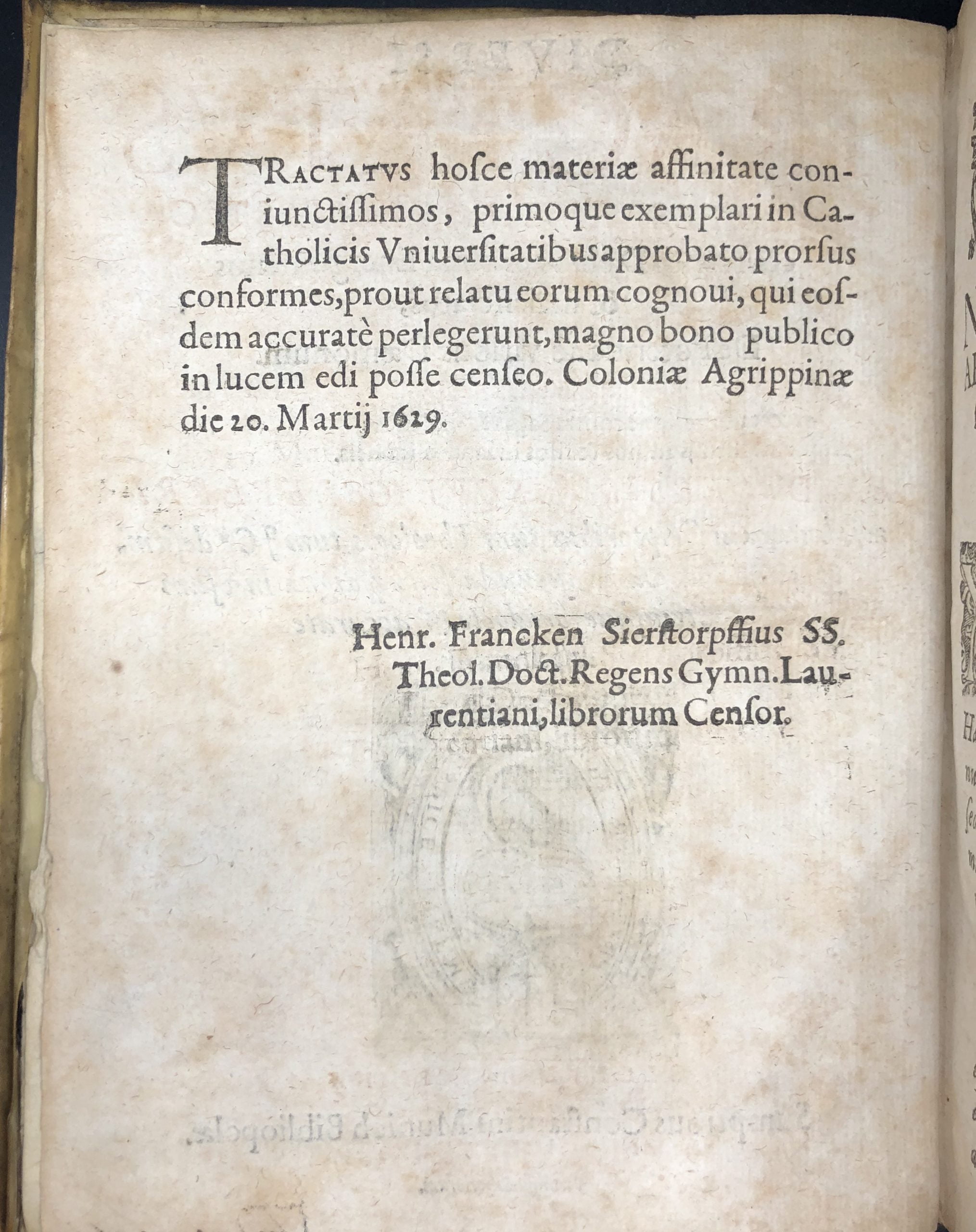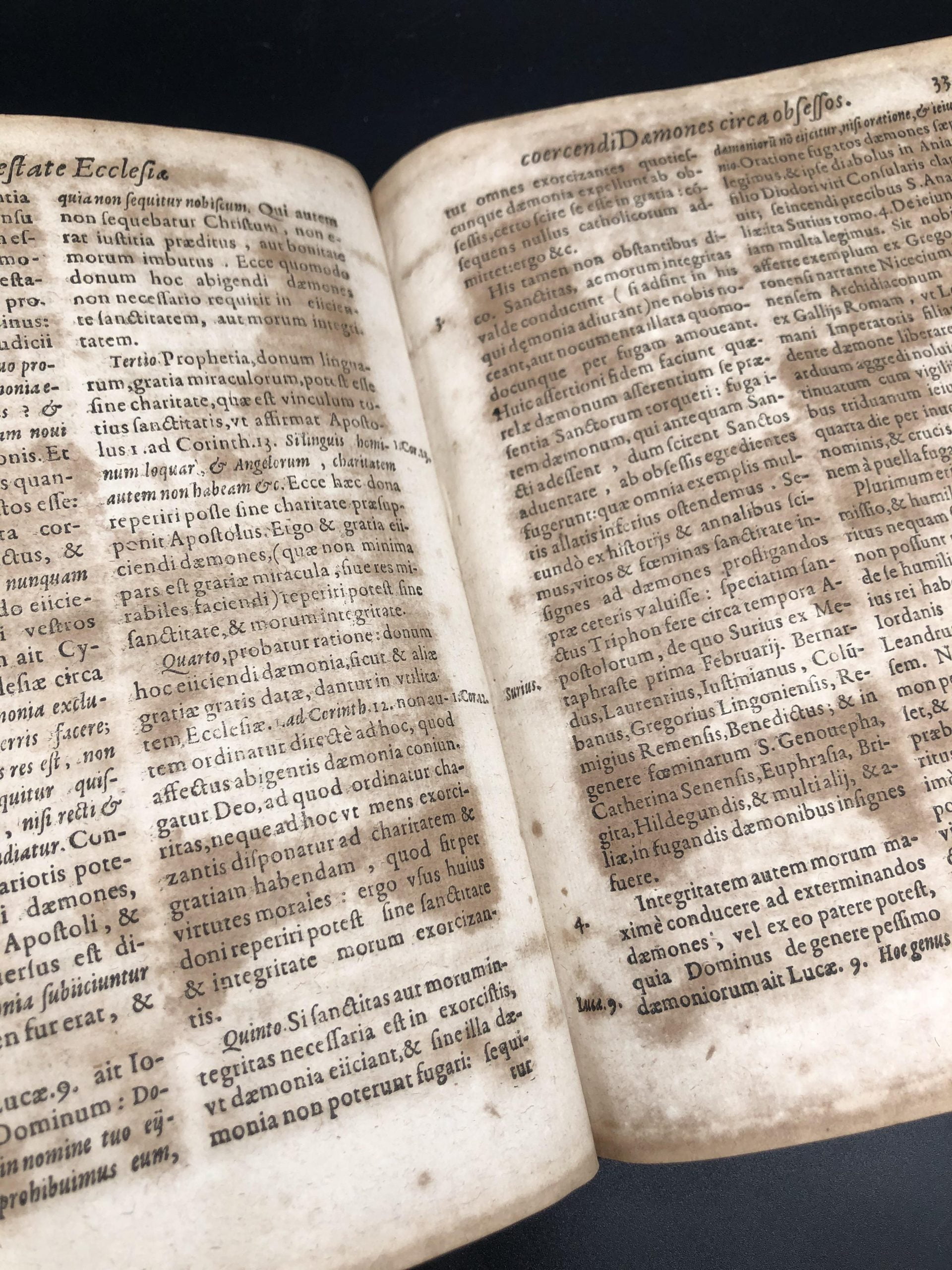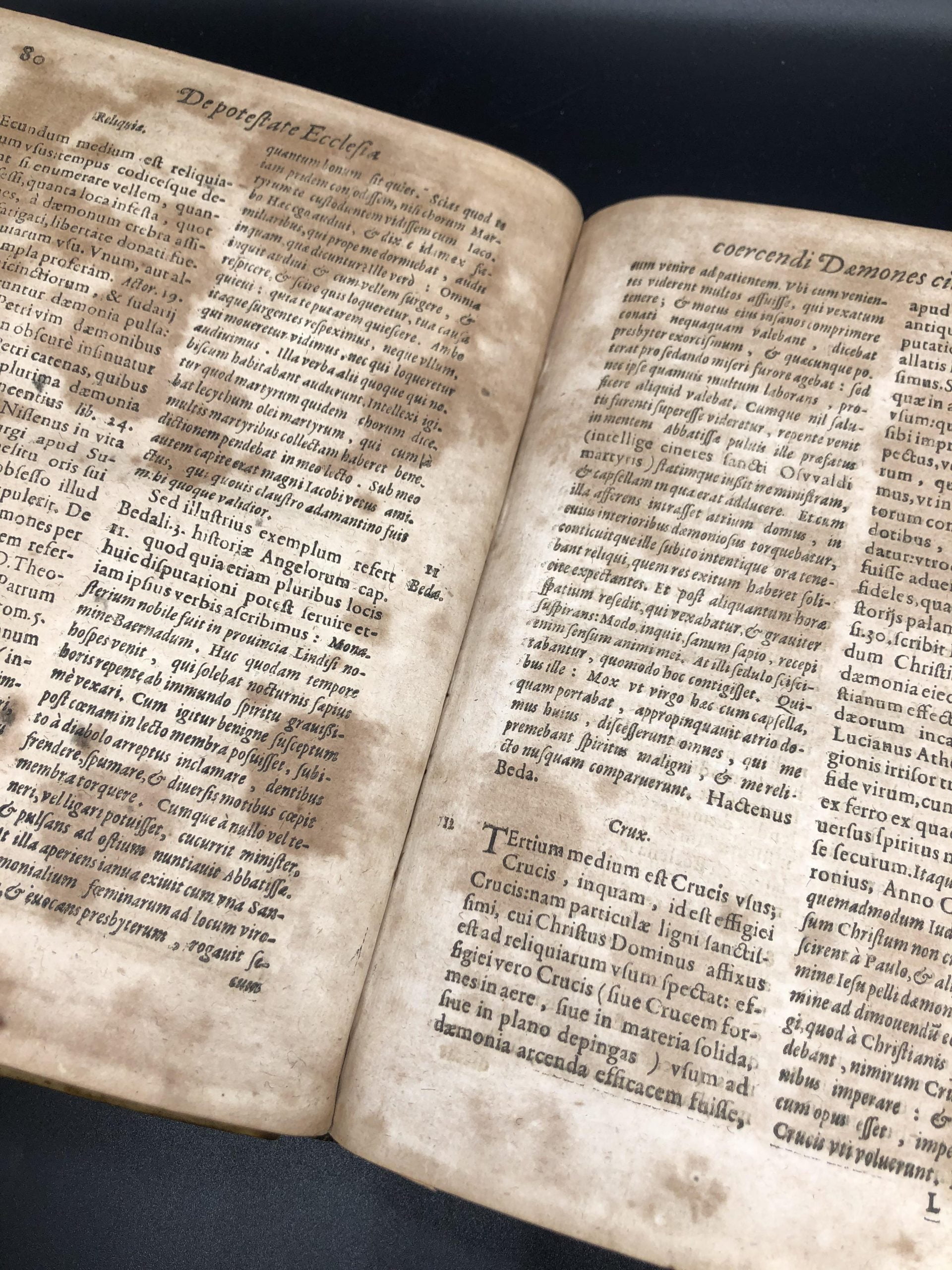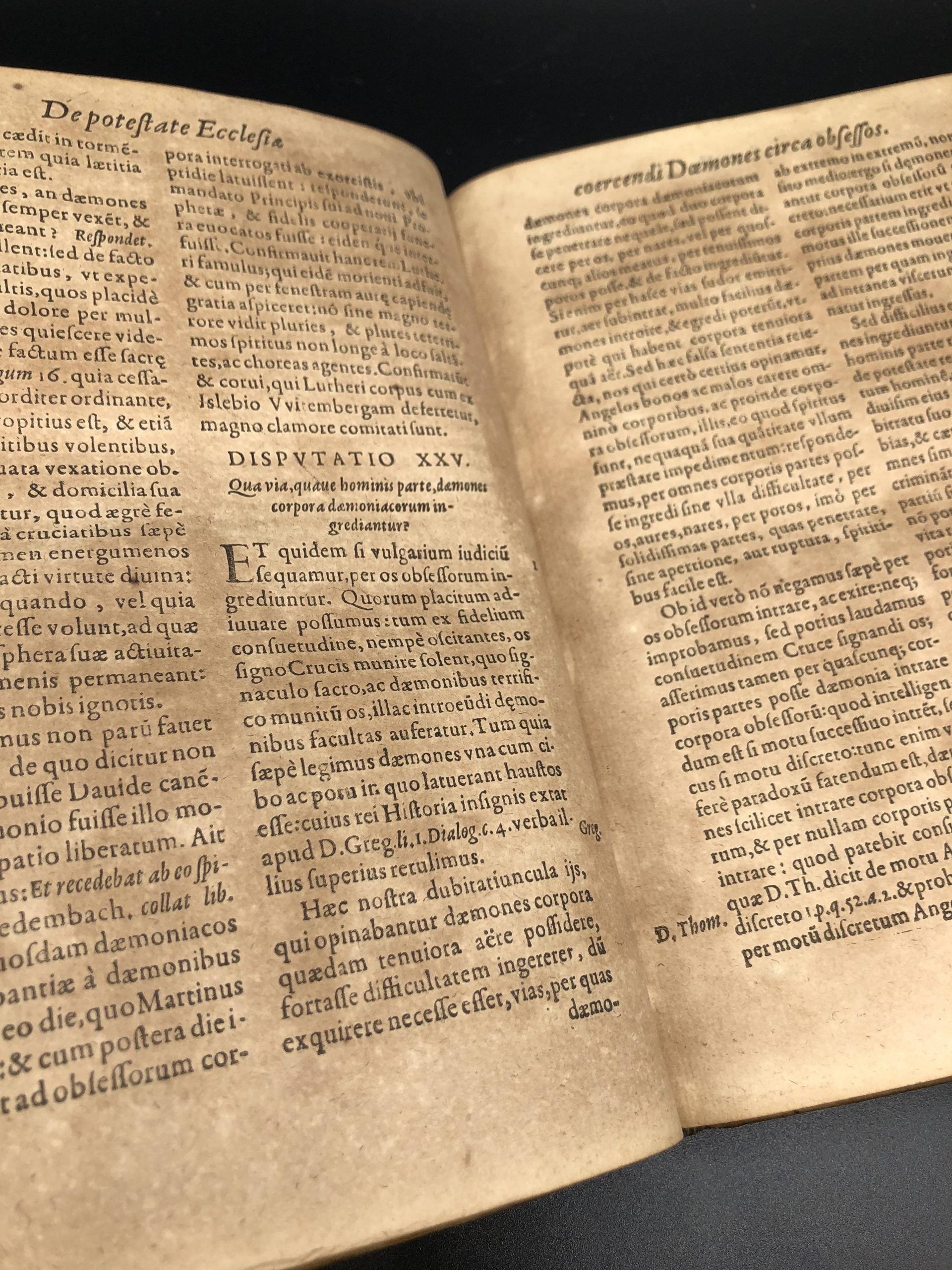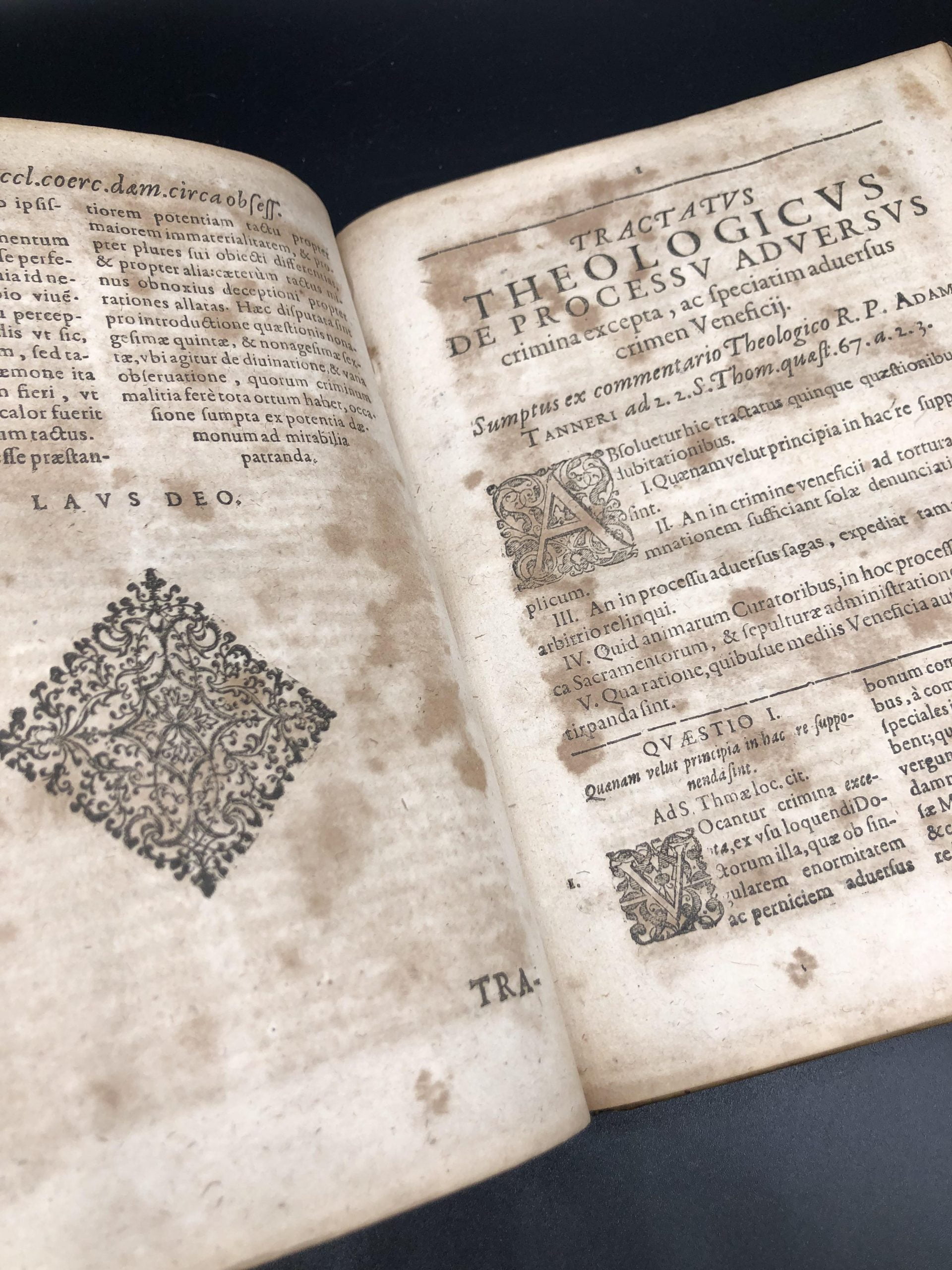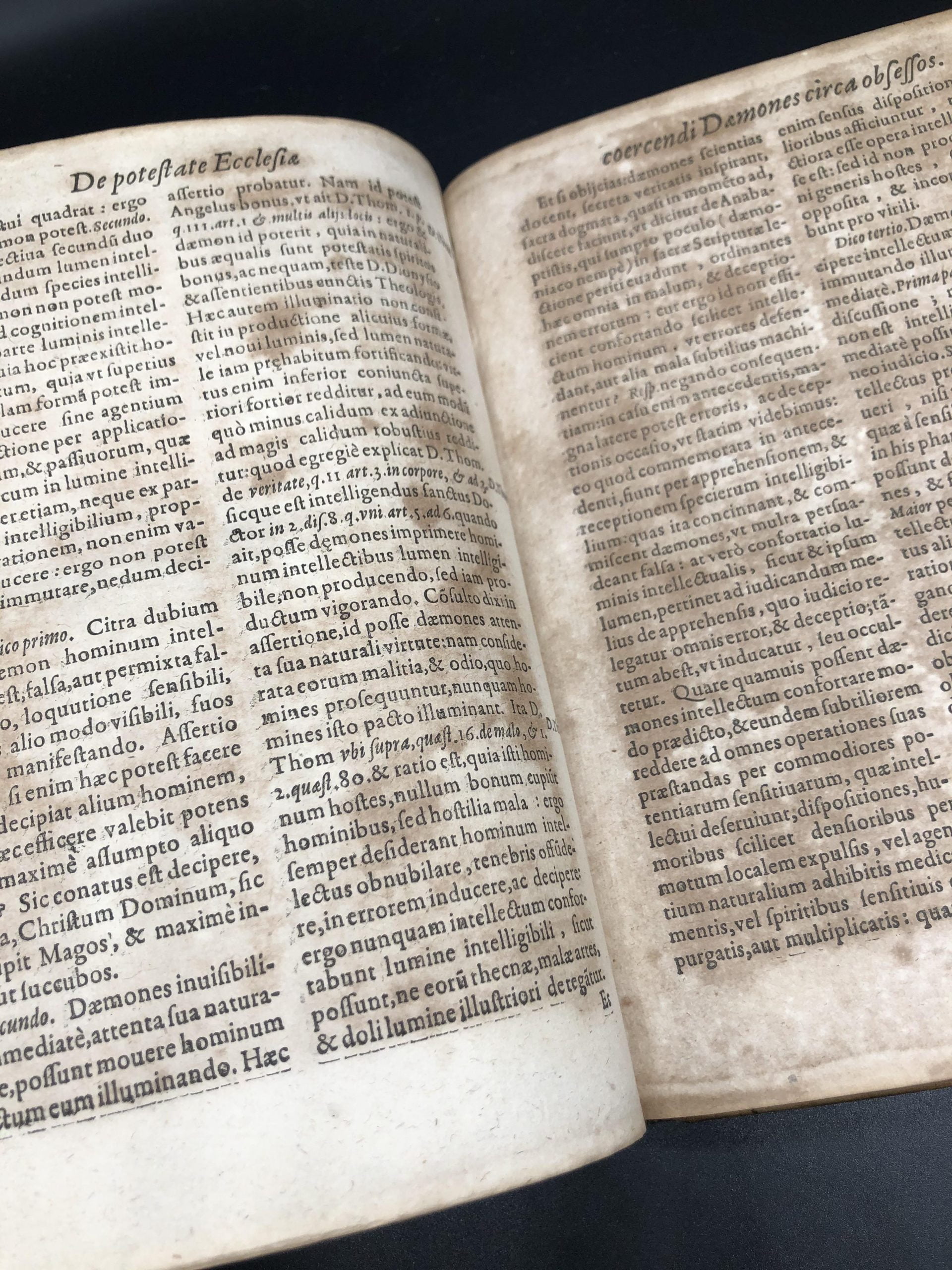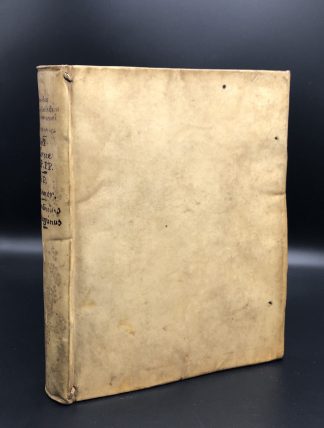TORRE, Raphael de la, TANNER, Adam, LAYMANN, Paul, PELLEGRINI, Marco Antonio
RARE WITCHCRAFT AND TRIALS
Diversi tractatus de potestate ecclesiastica coercendi Daemones circa Energumenos & maleficiatos
Cologne, Sumptibus Constantini Munich bibliopolae, 1629£3,750.00
FIRST EDITION. 4to. pp. 8, 236, 166 (ii), last blank. Roman letter, little Greek, double column. Engraved printer’s device to t-p, in red and black, woodcut initials and ornaments. T-p softened, paper browning or spotting (poor quality paper) throughout. An acceptable copy in contemporary vellum, yapp edges, title inked to spine. Contemporary purchase note and autograph ‘Jok i m Schots’ to ffep, C18 inscription ‘(?) Wachler’ to t-p, early monogram(?) ‘D.V. d’em’ to rear pastedown.
The scarce first edition of this rare collection of treatises on canon law, demonology and exorcism. The first and second were produced to instruct judges on the procedures and pitfalls of witch trials. The first, ‘Tractatus de potestate ecclesiae’, was written by the Spanish Dominican Raphael de la Torre, a prolific but obscure author, whose works of canon law were studied and used in the tribunals of Europe and the New World. Each of its sections (‘disputatio’) addresses questions concerning the best practice for exorcism—e.g., the moral integrity required of the exorcist, the nature of ecclesiastical power in chasing demons away, instruments which can be used (relics or crucifixes) and how they work. The second, ‘Tractatus theologicus de processu adversus criminal excepta’, was written by the Austrian Jesuit Adam Tanner (1572-1632), to discuss trials for special crimes, in particular sorcery. It instructs on the behaviour becoming to judges, the value of evidence for arrest and torture, and the ‘arbitrium’ of judges. Interestingly, after his sudden death during a journey, Tanner was initially denied Catholic burial as the inhabitants of the small village where his body was taken found a ‘hairy little imp’ among his things (Carus, ‘History of the Devil’). The third work, ‘De Sagis et Veneficiis’, was written by the Austrian Paul Laymann SJ (1574-1632), an advocate of milder treatment against those accused of witchcraft. Especially concerned with female witches, it recommends that women accused of witchcraft who die in prison before confession should be buried in consecrated ground, that the reputation of accused women who were not found guilty or did not confess should not be tarnished posthumously. The fourth, ‘Consilium de sagis’, by the Paduan jurist Marco Antonio Pellegrini (1530-1616), begins with 157 ‘dubia’ or debated questions, including the evidence necessary for torture, whether women can testify and the behaviour of lawyers towards the accused. An important collection in the legal history of witchcraft.
St Bonaventure, GW and Columbia copies recorded in the US.VD17 23:292158Y. Not in BL STC C17, Caillet, Thorndike, Graesse or Bib. Esot.In stock


